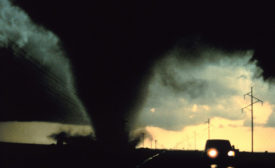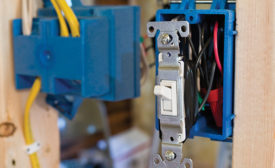Home » electrical safety
Articles Tagged with ''electrical safety''
What you should know about GFCIs
Train employees in their use and prevent injuries & electrocutions
February 17, 2016
Graphic Products publishes arc flash boundary infographic
Graphic outlines safety requirements set by NFPA 70E Standards
January 26, 2016
Newly designed training program safeguards unqualified employees against common workplace electrical hazards
Training from J. J. Keller & Associates, Inc. introduces the basics of electrical hazards in the workplace and emphasizes safety responsibility of all employees
January 14, 2016
Get our new eMagazine delivered to your inbox every month.
Stay in the know on the latest safety trends.
SUBSCRIBE TODAYCopyright ©2024. All Rights Reserved BNP Media.
Design, CMS, Hosting & Web Development :: ePublishing








